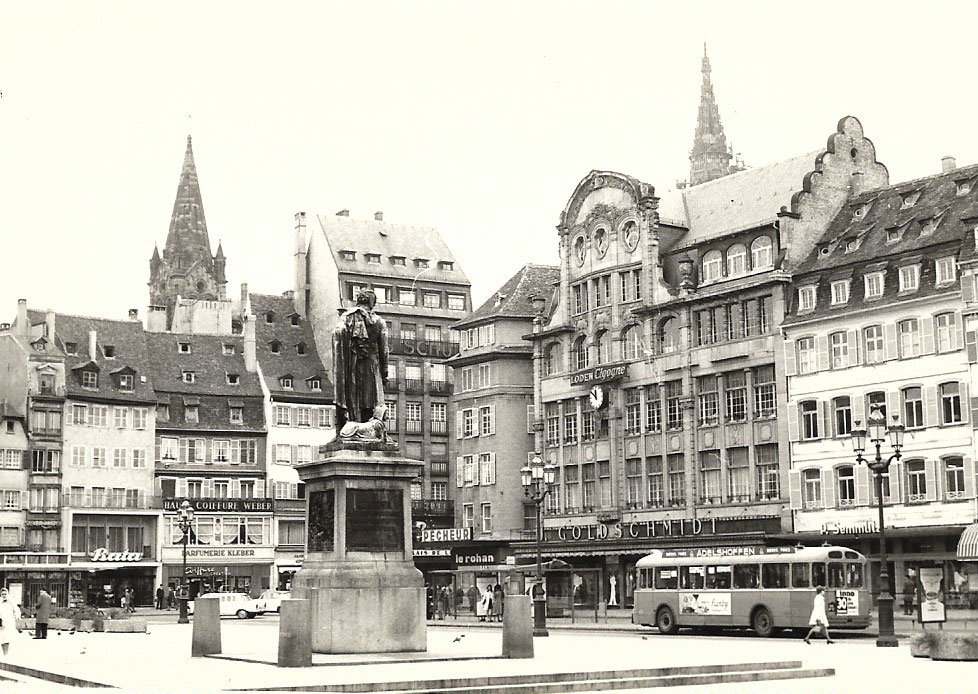In Environmental Perspectives
p.123-150
Introduction
During the last decade we have been able to observe a renewed interest in urban public spaces in general, and most particularly in streets and squares both among town dwellers, theoreticians and practitioners of urbanism and architecture (Anderson. 1978; Appleyard. 1975. 1981; Jacobs. 1961; Rudofsky, 1969; Whyte. 1980). The term “renewed” is particularly adequate here as what we see is a reaction to the conception of urbanism which quite simply ignores squares and describes the traditional urban streets only as being the central point of an unbearable disorder (Le Corbusier. 1946; 1957).
To give back life to cities made arid by modern urbanism. three types of attitudes emerge. Firstly, one which is often put into practice for instance in French new towns (Chat in. 1975) and which does nut question the theoretical foundations of functionalist urbanism, but which seeks “an improvement by creating as dense an urban centre as possible within the new towns (….) An accumulation of retail trade and collective facilities are arranged around squares. But while squares are rediscovering their traditional vocation as places for meeting and meandering, they are nonetheless just one accessory among others” (Favardin. 1982. p.76).
The second attitude is more critical of functionalist urbanism and finds its expression in the desire to integrate recent squares into the history of a given to town (Krier. 1980). Finally, the third attitude occurs in an already existing urban web, often quite ancient, and involves a program for the protection of urban buildings and sites, based on values which were defined from the XIXth century onwards by the Historical Monuments Service which, for example, was founded in France in 1830.
Restoration and protection concepts have from the beginning been a point for controversy (Parent. 1981) because very different answers can be given to the questions they raise at different levels. What makes a “historical landmark”? What building deserves to be restored and protected? What kind of restoration is the most “authentic” one? Or the most “aesthetic” one? Some architects or art historians favor a strict fidelity to original designs regardless of the modern context of the building or place. Others plead in favor of an interpretation of the architectural, aesthetic or social history of the building and for the choice of the time when the building was the most “beautiful” or “successful” etc… and technical issues make all answers the more complex.
Questions concerning the social stakes of restoration and protection are added to-day to this still on-going controversy. What is the social cost of protection measures for urban sites? Who profits from them, and who suffers? What are its consequences for the modes of place appropriation? These are the questions which we would like to discuss in this chapter on the occasion of the study of the practices of three French public squares and a Swedish town square which have recently undergone measures for protection and which have also been reconverted into pedestrian areas.
To do this, we will take as a basis several empirical studies on squares undertaken by the author and the Psychology of Space Study Group in the course of the past twelve years (Decker. 1976; Korosec-Serfaty & Kaufmann. 1974; Korosec-Serfaty et a1. 1976; Korosec-Serfaty. 1981. 1982; Korosec-Serfaty & Schall. 1983; Uvy. 1976; Tramoni. 1976). Our aim is neither to describe each of these empirical studies, nor to enter into a detailed account of their results.
While each of them was designed to help us attain an understanding of the complexity of each case, we now wish to distance ourselves from the details of the studies, thus allowing us to articulate some of the thoughts they brought to our mind.
We thus offer a reflective piece on the cultural, social and psychological meaning of the preservation of urban places based on our interest for urban open spaces. This is why our intention is not only to compare the usage of these squares as they could be observed immediately before their transformation into pedestrian areas and their present usage, but also to adopt a wider scope. Indeed, we would first of all like to make an historical detour for each of these squares and to bring out the continuities and discontinuities between the traditional practice of these squares and their current usage.
Secondly, we will discuss from a general point of view the themes of thought which stem from the protection of urban monuments and sites, so as to situate better the squares which form the object of our study into a given doctrine of protection. As a conclusion, we will propose an analysis of the impact of the protection of these sites on their usage and representation.
Pour faire référence à ce chapitre
Perla Korosec-Serfaty (1987). Urban Open Spaces. In Canter, D., Stea D., Krampen M., (Dir.) Environmental Perspectives. Ethnoscapes Vol. 1, Current Challenges in the Environmental Social Sciences, Londres et New York, Gower Press, p. 123-150. http://perlaserfaty.net/urban-open-space/


